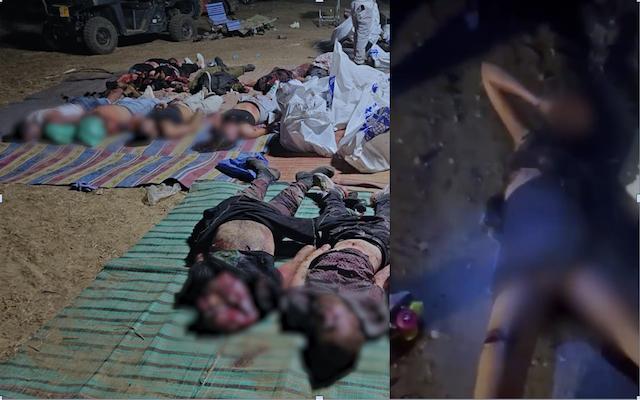On October 7th, a day that will forever be etched in the memory of the Israeli nation, an unspeakable horror unfolded. Thousands of Hamas and other fighters launched a surprise attack on Israeli towns, a day marked not only by bloodshed but by a chilling display of brutality live-streamed for the world to see. The problem is, many in the world still dispute the events.
As the sun rose on that fateful day, video footage and images emerged showing women, devoid of their dignity and clothing, some with their hands bound and bloodied. This was just the beginning of a series that included first hand testimonies from witnesses and first responders painting a picture of relentless violence and sexual assault. One horrific account described a gang rape at the Nova rave site near Re’im, and as Israeli forces finally arrived on the scene, the bodies of teenage girls were found, showing signs of sexual abuse.
"Mass rape was a premeditated part of Hamas's plan."
— Eylon Levy (@EylonALevy) November 22, 2023
The First Lady of Israel, Michal Herzog, writes powerfully about Hamas rapists' horrific sexual violence on October 7—and the international community's shameful silence and denial.https://t.co/i7JfSsZtH9
The attackers, in their rampage, overran 22 Israeli communities, leaving at least 1,200 dead and taking 240 hostages. But their actions went beyond physical violence; they aimed to instill a deep-seated terror, particularly targeting women, children, and unarmed civilians. Kochav Elkayam Levy, leading a commissioner investigating these heinous crimes, described it as an attempt to "destroy communities, a people, a nation."
In a stark contradiction to these accounts, Hamas officials have denied the use of sexual violence as a weapon of war, claiming such acts are against Islamic principles. But the evidence and testimonies gathered tell a different story, one of calculated and brutal terror. Anti-Israel activists and many antisemites who have been capitalizing on the melee to improve their social media profiles amongst their like-minded communities, have taken Hamas's account as proof nothing happened, ignoring the visual evidence uploaded by the perpetrators to their closed Telegram channels which eventually made its way around the social media networks.
On 25 November, the world will mark the International Day for the Prevention of Violence Against Women. More than a month and a half since the terrible massacre of October 7, and the stories of the horrors continue to be revealed. More and more it becomes clear that the rape,… pic.twitter.com/RNd8mGNcXu
— יצחק הרצוג Isaac Herzog (@Isaac_Herzog) November 23, 2023
Israel, in response, has initiated a comprehensive investigation, collating data from survivors, witnesses, and even the militants themselves. The police, along with the military and Shin Beit, are building a case of mass murder, rape, torture, and mutilation, drawing from an extensive pool of over 60,000 video clips and thousands of witness statements.
But the trauma extends beyond the immediate violence. Mental health professionals and sexual trauma specialists have been tirelessly working to provide care and support to the survivors, employing various therapeutic approaches to help them regain control over their traumatic memories.
"On October 7, Hamas and other Gaza-based terror groups perpetrated the world’s deadliest one-day massacre in more than 20 years. The horrific murder, torture, rape, desecration of bodies, and kidnapping of civilians revealed the depravity and evil of Hamas, as well as those who…
— Shoshana🦁🌞 (@Shoshana51728) November 26, 2023
However, the path to healing is fraught with challenges. Many survivors and witnesses are hesitant to come forward, and there's a significant underreporting of sexual violence, particularly in the context of war crimes. This has placed an immense burden on first responders and morgue workers, who have become key sources of information about the extent of the atrocities.
The country's specialists, while focusing on providing care, also acknowledge the nationalistic and dehumanizing nature of these crimes, adding another layer of complexity to the healing process. In this landscape of pain and loss, the true extent of the atrocities of October 7th continues to unfold, revealing a tragedy that has not only scarred individuals but has also left an indelible mark on the nation's collective consciousness.
#Breaking: #Bombshell: Report from the Washington Post:
— Open Source Intel (@Osint613) November 27, 2023
The Washington Post exposes the horrifying reality of rape and sexual violence during the October 7th terror attack. Witnesses detail graphic instances of gang rape, torture, and murder inflicted on women and girls.…
This dark day in Israel's history serves as a stark reminder of the depths of human cruelty and the resilience of the human spirit in the face of unimaginable horror. It's a call to remember, to bear witness, and to seek justice for the countless lives shattered on that day.


